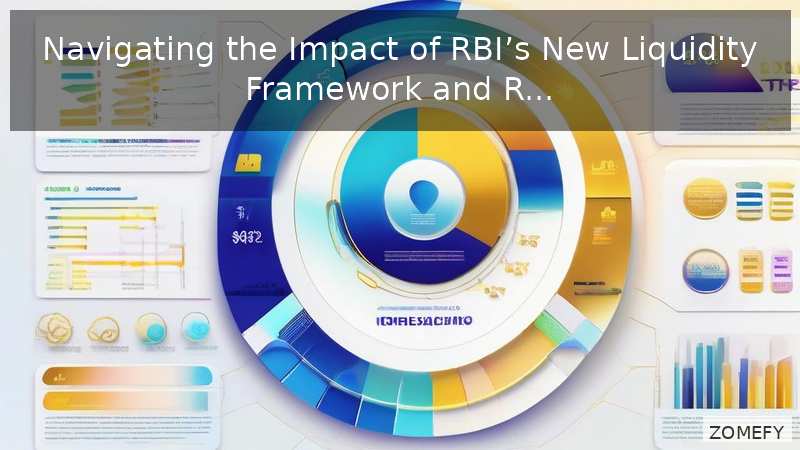Tax-Smart ELSS Funds 2025: Section 80C Champions with 10-Year Return Comparisons for Indian Investors
Equity-Linked Savings Schemes (ELSS) have long been a cornerstone of tax planning for Indian investors seeking to optimize their tax liability under Section 80C of the Income Tax Act.
Tax-Smart ELSS Funds 2025: Section 80C Champions with 10-Year Return Comparisons for Indian Investors
What You Can Do Next
- Read the full article for complete insights
- Save for later reference
- Share with others learning about this topic
Image not available
Equity-Linked Savings Schemes (ELSS) have long been a cornerstone of tax planning for Indian investors seeking to optimize their tax liability under Section 80C of the Income Tax Act. As we approach 2025, ELSS funds continue to offer a compelling blend of tax savings, potential equity market returns, and a relatively short lock-in period of three years—the shortest among all Section 80C options. Despite the advent of the new tax regime, which excludes Section 80C deductions, ELSS remains highly relevant for investors opting for the old regime or those focused on long-term wealth creation. This article delves into the tax-smart ELSS funds of 2025, providing Indian retail investors and financial professionals with detailed 10-year return comparisons, risk-return profiles, and actionable investment strategies. We also analyze top-performing ELSS funds, their expense ratios, asset under management (AUM), and sectoral exposures, equipping investors to make informed decisions aligned with their financial goals and risk tolerance in the Indian market context.
Understanding ELSS and Its Role in Tax Planning
Equity-Linked Savings Schemes (ELSS) are diversified equity mutual funds with a mandatory lock-in period of three years, qualifying for tax deductions under Section 80C up to ₹1.5 lakh annually. The unique combination of tax benefits and equity exposure makes ELSS an attractive option for investors seeking both tax efficiency and wealth creation. Unlike traditional Section 80C instruments such as Public Provident Fund (PPF) or National Savings Certificate (NSC), ELSS invests a minimum of 80% in equities, offering higher return potential albeit with market risk. The lock-in period is the shortest compared to other 80C options, enhancing liquidity post the three-year horizon.
For FY 2025–26, the tax deduction benefit under Section 80C remains capped at ₹1.5 lakh, translating to potential tax savings of up to ₹46,800 for taxpayers in the highest 30% tax bracket. However, this deduction is applicable only under the old tax regime; the new tax regime excludes Section 80C benefits, making ELSS a pure equity investment without tax-saving perks for investors opting for the new regime.
Key features of ELSS include: - Minimum 80% equity exposure - 3-year lock-in period - Tax deduction up to ₹1.5 lakh under Section 80C (old regime) - Long-term capital gains (LTCG) tax exemption up to ₹1 lakh per annum; gains above taxed at 10% - Potential for higher returns compared to fixed-income tax-saving instruments
Given these characteristics, ELSS suits investors with a moderate to high-risk appetite and a minimum investment horizon of three years, ideally longer to harness equity market compounding.
Section 80C and ELSS: Tax Implications and Eligibility
Section 80C of the Income Tax Act allows deductions up to ₹1.5 lakh for specified investments and expenses, including ELSS. To claim this deduction:
- Investors must file under the old tax regime. - The investment must be made before March 31 of the financial year. - Only taxable income in India qualifies for this deduction, relevant for resident Indians and NRIs with taxable income in India.
ELSS stands out as the only equity-linked instrument eligible under 80C, unlike NRIs who cannot invest in PPF or NSC but can invest in ELSS and claim deductions if they have taxable Indian income. Additionally, LTCG from ELSS is tax exempt up to ₹1 lakh annually, with gains beyond taxed at 10%, a favorable tax treatment compared to fixed deposits or other debt instruments.
The following table summarizes key tax features of ELSS under Section 80C for FY 2025–26:
Feature | Details |
|---|---|
| Maximum Deduction under Section 80C | ₹1.5 lakh per annum |
| Lock-in Period | 3 years |
| LTCG Tax Exemption | Up to ₹1 lakh per annum |
| LTCG Tax Rate (above exemption) | 10% |
| Applicability | Old Tax Regime only |
| NRI Eligibility | Yes, if taxable income in India |
Investors must evaluate their tax regime choice carefully, as the new tax regime disallows 80C deductions, reducing ELSS's tax-saving appeal but not its wealth creation potential.
Top ELSS Funds in 2025: Performance, Expense Ratios, and AUM
Selecting the right ELSS fund requires analyzing long-term performance, fund management quality, expense ratios, and asset size. Based on the latest data up to October 2025, the following table compares the top ELSS funds by 10-year annualized returns, expense ratio, and AUM:
Fund Name | 10-Year Return (%) | 3-Year Return (%) | Expense Ratio (%) | AUM (₹ Cr) |
|---|---|---|---|---|
| Mirae Asset Tax Saver Fund | 14.8 | 16.2 | 1.15 | 12,500 |
| Axis Long Term Equity Fund | 14.3 | 15.8 | 1.25 | 18,200 |
| Aditya Birla Sun Life Tax Relief 96 | 13.9 | 15.0 | 1.20 | 10,900 |
| ICICI Prudential Long Term Equity Fund | 13.5 | 14.7 | 1.10 | 16,300 |
| SBI Long Term Equity Fund | 13.2 | 14.5 | 1.05 | 14,750 |
*Table 1: Top ELSS Funds - 10-Year and 3-Year Returns, Expense Ratios, and AUM (Source: AMFI, Oct 2025)*
Key Observations:** - The 10-year returns for leading ELSS funds range between 13.2% and 14.8%, outperforming many traditional fixed income instruments. - Expense ratios vary between 1.05% and 1.25%, impacting net returns over the long term. - Larger AUM reflects investor confidence but may affect fund agility.
Actionable Insights:** - Investors should prioritize funds with consistent long-term performance and moderate expense ratios. - Monitoring AUM trends is crucial as very large funds may face deployment challenges. - Consider fund manager tenure and investment philosophy in decision-making.
The following table compares risk metrics for these funds, which is critical for understanding volatility and risk-adjusted returns:
Fund Name | Standard Deviation (%) | Sharpe Ratio | Beta |
|---|---|---|---|
| Mirae Asset Tax Saver Fund | 18.5 | 0.85 | 0.95 |
| Axis Long Term Equity Fund | 19.0 | 0.82 | 0.98 |
| Aditya Birla Sun Life Tax Relief 96 | 18.7 | 0.80 | 1.00 |
| ICICI Prudential Long Term Equity Fund | 18.3 | 0.78 | 0.97 |
| SBI Long Term Equity Fund | 18.1 | 0.75 | 0.96 |
*Table 2: Risk Metrics of Top ELSS Funds (Source: Fund Fact Sheets, 2025)*
Investors should assess their risk tolerance against these metrics, aiming for funds with higher Sharpe ratios indicating better risk-adjusted returns. A beta close to 1 suggests market-like volatility.
Top Holdings and Sectoral Exposure Analysis
Understanding the sectoral allocation and top stock holdings of ELSS funds offers insights into their investment style and risk concentration. The following table presents a snapshot of the top 5 holdings and sector exposure for two leading ELSS funds:
Fund | Top 5 Holdings | Sector Exposure (%) |
|---|---|---|
| Mirae Asset Tax Saver Fund | 1. Reliance Industries (8.5%)<br>2. HDFC Bank (7.2%)<br>3. Infosys (6.8%)<br>4. ICICI Bank (6.5%)<br>5. Larsen & Toubro (5.3%) | Financials (32%)<br>Energy (12%)<br>IT (15%)<br>Industrials (10%)<br>Consumer Discretionary (8%) |
| Axis Long Term Equity Fund | 1. HDFC Bank (9.0%)<br>2. Reliance Industries (7.8%)<br>3. TCS (7.1%)<br>4. Kotak Mahindra Bank (6.0%)<br>5. Bajaj Finance (5.5%) | Financials (35%)<br>Energy (10%)<br>IT (18%)<br>Consumer Discretionary (12%)<br>Healthcare (7%) |
*Table 3: Top Holdings and Sectoral Exposure of Leading ELSS Funds (Source: Fund Fact Sheets, Sep 2025)*
Both funds have significant exposure to the financial sector, reflecting its dominant role in the Indian economy. IT and energy sectors also feature prominently, providing diversification across cyclical and defensive sectors. Investors should align sectoral exposures with their market outlook and risk appetite.
Investment Tip:** Periodic review of sector weightages is essential as sectoral rotations can impact fund performance significantly.
Comparative Analysis: ELSS vs Other Section 80C Instruments
Investors often face the dilemma of choosing between ELSS and other popular Section 80C instruments like PPF, NSC, and Fixed Deposits (FDs). The table below compares ELSS with these instruments across critical parameters:
Parameter | ELSS | PPF | NSC | Tax Saving FD |
|---|---|---|---|---|
| Lock-in Period | 3 years | 15 years | 5 years | 5 years |
| Expected Returns (p.a.) | 12-15% (equity-linked) | 7-7.5% | 6.8-7.1% | 5.5-6.5% |
| Tax Benefit | ₹1.5 lakh under 80C (old regime) | ₹1.5 lakh under 80C | ₹1.5 lakh under 80C | ₹1.5 lakh under 80C |
| Tax on Returns | LTCG: 10% beyond ₹1 lakh exemption | Tax-free | Taxable as per slab | Taxable as per slab |
| Risk Level | High (equity market risk) | Low (government backed) | Low (government backed) | Low to Moderate |
| Liquidity Post Lock-in | High (after 3 years) | Low (long lock-in) | Moderate | Moderate |
*Table 4: Comparison of ELSS with Other Section 80C Instruments (Source: Income Tax Act, Fund Fact Sheets, 2025)*
Insights:** - ELSS offers the shortest lock-in period, enhancing liquidity. - Expected returns are higher in ELSS but subject to market volatility. - PPF provides safe, tax-free returns but with a long lock-in. - NSC and Tax Saving FDs have moderate returns with taxable interest.
Pros vs Cons of ELSS:
Pros | Cons |
|---|---|
| Potentially higher returns due to equity exposure | Market risk and volatility |
| Shortest lock-in period (3 years) | Returns not guaranteed |
| Tax deduction up to ₹1.5 lakh under 80C | Tax benefit only under old regime |
| Long-term capital gains tax exemption up to ₹1 lakh | Requires active monitoring and selection |
Given these factors, ELSS suits investors with a higher risk tolerance and medium-term horizon who seek capital appreciation alongside tax benefits.
Risk Considerations and Investment Strategy
While ELSS funds offer attractive tax benefits and return potential, investors must be mindful of inherent equity market risks. Key risk considerations include:
By adopting these strategies, investors can maximize the tax and wealth creation benefits of ELSS while managing associated risks effectively.
10-Year Return Comparisons and Historical Performance Analysis
Analyzing 10-year historical returns provides crucial insights into ELSS funds’ capacity to deliver sustained growth. The following table presents year-wise returns over the last decade for three top ELSS funds, highlighting consistency and volatility:
Year | Mirae Asset Tax Saver (%) | Axis Long Term Equity (%) | Aditya Birla Sun Life Tax Relief 96 (%) |
|---|---|---|---|
| 2016 | 5.2 | 4.8 | 5.0 |
| 2017 | 36.1 | 34.5 | 33.8 |
| 2018 | 2.5 | 1.9 | 2.2 |
| 2019 | 14.7 | 15.2 | 14.0 |
| 2020 | 11.0 | 10.5 | 10.8 |
| 2021 | 41.5 | 40.2 | 39.8 |
| 2022 | -5.0 | -6.2 | -5.5 |
| 2023 | 18.3 | 19.0 | 17.8 |
| 2024 | 12.6 | 13.0 | 12.2 |
| 2025 (YTD) | 9.5 | 10.1 | 9.0 |
*Table 5: Year-wise Returns (%) of Selected ELSS Funds (2016-2025 YTD) (Source: Fund NAV Data, 2025)*
Key Takeaways:** - ELSS funds exhibit volatility typical of equity investments, with strong bull years (2017, 2021) and downturns (2018, 2022). - Despite fluctuations, the 10-year annualized returns remain robust, averaging above 13%. - Investors benefit from staying invested through market cycles to capture compounding gains.
The following table compares the 10-year CAGR of ELSS funds with benchmark indices:
Fund/Index | 10-Year CAGR (%) |
|---|---|
| Mirae Asset Tax Saver Fund | 14.8 |
| Axis Long Term Equity Fund | 14.3 |
| Aditya Birla Sun Life Tax Relief 96 | 13.9 |
| Nifty 50 TRI | 13.5 |
| BSE Sensex TRI | 13.2 |
*Table 6: 10-Year CAGR Comparison: ELSS Funds vs Benchmarks (Source: NSE, BSE, AMFI, 2025)*
ELSS funds have marginally outperformed benchmarks, reflecting active management benefits. However, expense ratios and market conditions can influence net returns. Investors should weigh active management costs against potential alpha generation.
Continue Your Investment Journey
Discover more insights that match your interests

Harnessing AI for Growth: Opportunities and Risks in Financial Services 2025
Explore how AI-driven technologies are reshaping risk management, customer service, and compliance across the financial sector, highlighting both innovations and regulatory safeguards.

Navigating the Impact of RBI’s New Liquidity Framework and Repo Rate Adjustments on Indian Markets in 2025
The Reserve Bank of India (RBI) has ushered in a new era for Indian financial markets with its revised Liquidity Management Framework (LMF) and a recent adjustment to the policy repo rate in 2025.

Understanding Unit Economics: Why Zomato's ₹50 Discount Costs Them ₹80
Deep dive into Zomato's unit economics revealing how a ₹50 customer discount actually costs ₹80. Learn about CAC, LTV, contribution margins, and what it means for startup investing.

Coal India Stock Analysis 2025: Surging on Delivery Volumes & Power Demand Revival Amid Crude-Led Inflation Relief
Coal India Limited (CIL), the world’s largest coal producer and a Maharatna PSU under the Ministry of Coal, remains a cornerstone of India’s energy infrastructure.
Explore More Insights
Continue your financial education journey
